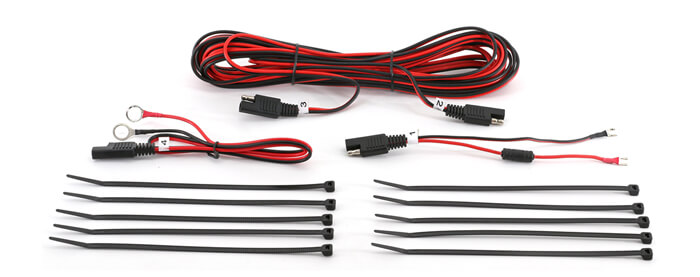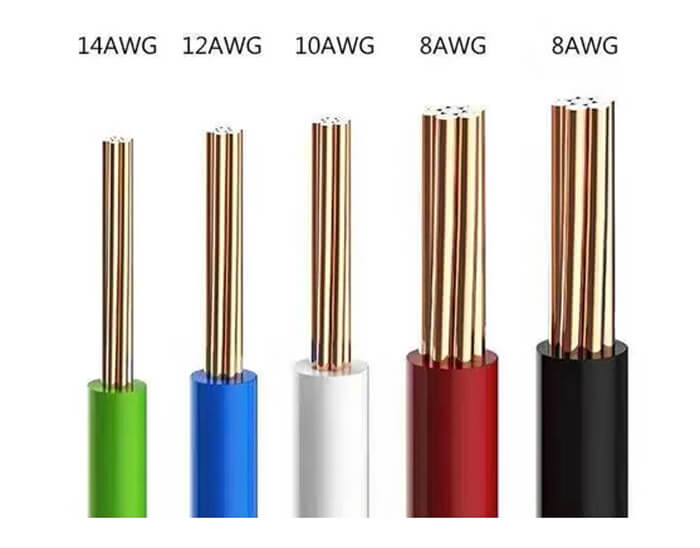Contents:
When installing a solar power system, one of the key considerations is selecting the right wire size. Using the appropriate wire size is crucial for efficiency, safety, and durability. While both amps and volts play an important role in wire sizing, understanding how they interact with each other will help you determine the correct wire size for your solar panel setup.

Understanding the Basics: Amps vs. Volts
Before diving into the calculations, it’s important to understand the difference between amps (A) and volts (V):
For solar systems, you’ll generally work with DC (direct current), so the amount of current (amps) flowing through the wire is what primarily dictates the wire size. However, the voltage (volts) also affects your wire choice, especially when considering system losses and efficiency.
Wire Sizing Considerations: Current and Voltage
To determine the appropriate wire size for your solar system, you need to consider several factors:
-
Current (Amps): The current rating of the wire is one of the primary factors in selecting the correct wire size. The wire should be capable of safely carrying the amount of current your solar panel array produces. The more amps flowing, the thicker the wire needs to be to prevent overheating or fire hazards.
-
Voltage Drop: A small voltage drop over long wire runs can lead to inefficiency in your system. This is especially critical in larger solar systems where wires may stretch for significant distances. A larger wire size can reduce voltage drop and ensure the efficient transfer of energy from your solar panels to the inverter and batteries.
-
Wire Length: The distance between your solar panels and the inverter or batteries will also impact the wire size. Longer distances increase the resistance in the wire, which can cause voltage loss. It is always a good idea to keep wire lengths as short as possible and use larger gauge wire for longer distances.
-
Temperature Rating: High temperatures can degrade the performance of the wire and increase the risk of insulation failure. Ensure that the wire you choose is rated for the maximum temperature it will be exposed to, especially in outdoor installations where wires are exposed to sunlight.
Calculating the Correct Wire Size
The general rule for wire sizing is based on the ampacity—the maximum current a wire can safely carry without overheating. The wire size is typically expressed in American Wire Gauge (AWG), and the table below can be used as a reference for selecting the proper wire gauge based on current (amps) and distance (in feet):
|
Amps
|
10 ft (3m)
|
25 ft (7.5m)
|
50 ft (15m)
|
100 ft (30m)
|
|
10A
|
14 AWG
|
14 AWG
|
12 AWG
|
10 AWG
|
|
20A
|
12 AWG
|
10 AWG
|
8 AWG
|
6 AWG
|
|
30A
|
10 AWG
|
8 AWG
|
6 AWG
|
4 AWG
|
|
40A
|
8 AWG
|
6 AWG
|
4 AWG
|
2 AWG
|
|
50A
|
6 AWG
|
4 AWG
|
2 AWG
|
1 AWG
|
Final Thoughts
When selecting the wire size for your solar panel system, you should prioritize the current (amps) the wire will carry and ensure that the wire can handle both the load and the distance. While voltage also plays a role, especially in preventing excessive losses, the current is typically the more critical factor for wire sizing. Always consider safety standards, local regulations, and manufacturer recommendations when making your final decision.
Factors Affecting Wire Size Selection
Aside from the current, voltage drop, wire length, and temperature rating, there are other key factors that should be considered when selecting the proper wire size for your solar panel system.
-
Type of Wire: There are different types of wires used for solar installations, such as THHN, XHHW, and PV Wire. Each type has different insulation materials and temperature ratings. It’s important to choose a wire type that suits the environment in which the solar system is installed. For outdoor systems, wires that are resistant to UV rays, moisture, and temperature extremes are recommended.
-
System Voltage: The voltage of the solar panel system (whether 12V, 24V, 48V, or higher) also plays a role in selecting the wire size. In systems with higher voltage, smaller gauge wires can often be used to carry the same amount of power as in lower-voltage systems, due to the lower current. However, it’s crucial to ensure that the voltage rating of the wire is higher than the system voltage to avoid insulation damage.
-
Overcurrent Protection: When sizing wires, it’s essential to ensure that they are paired with appropriate overcurrent protection devices, such as fuses or circuit breakers. These devices are designed to disconnect the power if the current exceeds the wire’s capacity, preventing overheating or fire hazards. The fuse or breaker size should be based on the maximum current the wire can safely carry.
-
Regulatory Compliance: Depending on where you are located, there may be local building codes and electrical standards that govern the selection of wire sizes for solar installations. These codes often take into account safety concerns like potential voltage drops, environmental factors, and load requirements. Make sure to consult these standards and regulations to ensure compliance with your installation.
-
Future System Expansion: If you plan to expand your solar system in the future, it’s worth considering wire sizes that can handle increased loads. Upsizing your wires during the initial installation can save time and money in the long run, especially if you intend to add more panels, inverters, or batteries later.
Wire Size Calculator: A Quick Reference
For those who need a more precise recommendation based on their specific solar system, a wire size calculator can be a helpful tool. These calculators take into account the system’s voltage, amperage, distance, and other variables to determine the optimal wire size.
A wire size calculator works by applying the ampacity and voltage drop formulas to calculate the correct wire gauge. The formula for voltage drop is:
Voltage Drop=2×Length of Wire×Current (Amps)Conductor Resistance per Foot\text{Voltage Drop} = \frac{2 \times \text{Length of Wire} \times \text{Current (Amps)}}{\text{Conductor Resistance per Foot}}Voltage Drop=Conductor Resistance per Foot2×Length of Wire×Current (Amps)
For most solar power systems, keeping the voltage drop under 3% for DC wiring is recommended. This ensures minimal energy loss and optimal system performance.

Choosing Between Copper and Aluminum Wires
In addition to wire size, another important consideration is the material of the wire. The most common options are copper and aluminum. Both materials have their advantages and disadvantages:
-
Copper wires are more conductive, meaning they can carry more current with less resistance and thus reduce energy loss. They are more expensive but are the preferred choice for most solar systems due to their reliability and better long-term performance.
-
Aluminum wires are less expensive and lighter than copper wires, but they have a lower conductivity, meaning you’ll need to use a thicker gauge to carry the same current. Aluminum wires are often used for larger installations or when cost is a significant factor.
Both copper and aluminum wires require proper termination and insulation to ensure long-term performance, and the connectors used should be suitable for the type of wire chosen.
Temperature Considerations and Wire Insulation
Temperature can significantly affect the performance of solar panel wires. High ambient temperatures can lead to increased resistance, which in turn raises the risk of overheating and wire degradation. In contrast, colder temperatures may cause the wire to become brittle.
To mitigate these issues, choosing a wire with appropriate insulation ratings is critical. Wires used for outdoor solar installations are typically insulated with materials that are resistant to UV rays, water, and extreme temperatures. Common wire insulation types include PVC (Polyvinyl Chloride), XLPE (Cross-linked Polyethylene), and EPR (Ethylene Propylene Rubber).
When considering wire insulation, take into account the expected temperature range in your installation area and ensure the wire insulation can handle those conditions.
Common Mistakes to Avoid When Sizing Solar Panel Wires
While choosing the right wire size may seem straightforward, there are several common mistakes that should be avoided:
-
Underestimating the Voltage Drop: Some installers may ignore the impact of voltage drop over long wire runs. Even a small voltage drop can cause a significant reduction in system efficiency, leading to unnecessary energy losses. Always plan for the lowest voltage drop to ensure maximum energy transfer.
-
Using Inadequate Wire Type: Using wires that are not rated for solar installations can lead to performance issues and even safety hazards. Make sure to use wire that is specifically designed for outdoor and photovoltaic applications, such as PV wire.
-
Choosing the Wrong Gauge: Selecting a wire that is too small can result in overheating, energy loss, and even fire hazards. Conversely, using wire that is too large is an unnecessary expense and may result in a more difficult installation process.
-
Not Accounting for Temperature: Failing to account for high or low temperatures can affect the overall longevity and safety of the wire. Always consider the temperature rating of the wire and ensure it is suitable for your installation environment.
By carefully considering these factors and using accurate calculations, you can ensure that your solar panel system is not only safe but also efficient and long-lasting.
FAQs







